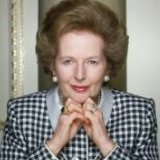Another year, Another lizard: One marks the passage of time by the return of the Tokay?
-
Recently Browsing 0 members
- No registered users viewing this page.
-
Topics
-
-
Popular Contributors
-
-
Latest posts...
-
8
Jomtien 90 day report - it just got better.
yeah but you get a nasty stamp in your passport. -
34
How much should you pay a girl if you ask her to stop working?
52k.... per year. -
4,423
LTR Visa is Now available for Long Term Residency
Hey everyone, For those LTR categories where foreign sourced tax exemption is mentioned (for example, Work-from-Thailand), is there clarity that even if remitted in the same year, it stays tax free? -
8
-
22
Thai - Cambodia Conflict Thaksin's Drone Donation Sparks Thai Army Security Concerns
where's his license and permit ? people I know who live in PKK have police ringing there bell warning them about drone possesion nd operation -
123
Report Stranded Aussie Pensioner Pleads for Return Home
Don't feel sorry for him, and also not kicking him when he's down. Just don't understand, how something so easy to solve, isn't solved already. 10k THB and a ride to the airport, or 15k THB, and a ride to UTH airport. Ban Dung used to have a wonderful expat community, or so I read on the local forum. Where are they all at, or did they all leave when the embassies stopped issuing income letters
-
-
Popular in The Pub










Recommended Posts
Create an account or sign in to comment
You need to be a member in order to leave a comment
Create an account
Sign up for a new account in our community. It's easy!
Register a new accountSign in
Already have an account? Sign in here.
Sign In Now